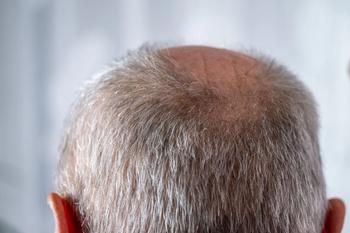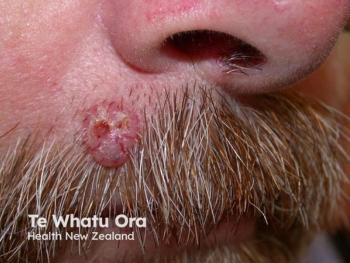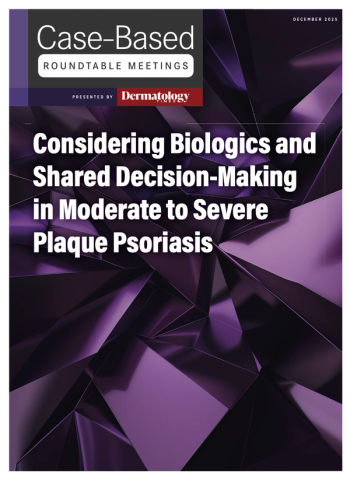
Novel Stem Hair Serum Improves Hair Loss When Combined with Minoxidil
Key Takeaways
- Combining Cuticapil stem hair serum with minoxidil improved hair growth, reduced shedding, and increased hair density in patients with androgenetic alopecia and female pattern hair loss.
- The study involved 60 patients, randomized to receive either the serum with minoxidil or minoxidil alone, with assessments conducted over 12 weeks.
In a real-world study, the combination of Cuticapil stem hair serum and minoxidil reduced shedding and improved hair density.
Combining an investigational Cuticapil stem hair serum with topical minoxidil may improve hair loss in patients with mild to moderate androgenetic alopecia and female pattern hair loss.1 Results from a real-world study showed superior results in promoting hair growth, reducing shedding, and improving hair density.
The multicenter, prospective, parallel-arm, observational study included 60 male (n = 18) and female (n = 42) adult patients at 7 clinics in India (Delhi, Mumbai, and Pune) from August 2023 to July 2024. The mean age of the cohort was 34.18 years. Each had a clinical diagnosis of male androgenetic alopecia (Grade III, IV, or V) or female pattern hair loss (Grade II or III) for longer than 6 months (trichoscopic hair diameter diversity > 20%). Most of the male patients had Grade III androgenetic alopecia (76.92%), while most of the female patients had Grade II female pattern hair loss (84.75%).
Some patients had previously used 2% minoxidil while others were naïve to the product. The population was evenly randomized to receive either the stem hair serum and minoxidil lotion or minoxidil on its own. Both products (1 mL) were applied twice a day. Participants combined the serum with a nonketoconazole-based shampoo. Investigators utilized the Hair Pull Test, global 7-point photographic analysis, and hair shedding count to assess results after 12 weeks. Safety profile and patient-reported outcomes, via the Patient Global Assessment, were also measured.
The Cuticapil serum is comprised of synergistic complexes like Caffeine Herbasome (green coffee beans and niacinamide), Procapil (olive, citrus, and glycine-histidine-lysine, Capilia Longa (turmeric), Cressatine (watercress and Indian watercress), and Ronacare Biotin Plus (biotin). These ingredients deeply penetrate the scalp and work together to enhance shaft elongation, prevent oxidative stress-induced cell senescence, rejuvenate hair bulbs, improve blood circulation, strengthen roots, support keratin production, and promote longer and healthier growth.
Those who used the stem hair serum along with minoxidil observed reduced hair shedding (p = 0.0220). Mean hair shedding count decreased from 48.10 to 22.68. This reduction was greater compared to just minoxidil on its own. The Hair Pull Test revealed a lower mean rank (26.97) than minoxidil on its own (34.03) (p = 0.0196). A lower mean rank correlates with greater improvement and superior efficacy.
To further demonstrate efficacy, the global photography analysis showed a higher mean rank of 36.13 in the Cuticapil group versus 24.87 in the minoxidil group (p = 0.0057). This is similar to what was found in the trichoscopic and blinded photographic assessment, corresponding to a more noticeable enhancement in the appearance and health of the hair. Regarding safety and tolerability of the stem hair serum, no adverse events were reported, including serious adverse effects.
There are some limitations to the study, including the small sample size and short duration, which may limit the generalizability of the findings. Future research should include larger, more diverse populations with longer follow-up periods, especially among patients with more severe forms of hair loss.
Minoxidil, although effective, may be limited due to incomplete hair regrowth, slow onset of action, and adverse effects like hormonal imbalances, irritant contact dermatitis, facial hypertrichosis, and irritation on the scalp.2 Based on these results, adding the Cuticapil stem hair serum may mitigate these limitations and boost efficacy.
“These shortfalls highlight an unmet therapeutic gap, necessitating the exploration of alternative, safer, and more effective options, particularly those leveraging plant-based or novel formulations to address underlying causes and enhance hair health comprehensively,” the authors wrote.
References
1. Dhurat R, Kulkarni GR, Ganjoo A, et al. Real-World Efficacy and Safety of Cuticapil Stem Hair Serum as an Add-On to Minoxidil in Androgenetic Alopecia: A Prospective Observational Study. J Cosmet Dermatol. 2025;24(5):e70247. doi:10.1111/jocd.70247
2. Jacobs D, Buttigieg CF. Minoxidil experience in Australia 1974-1980. Med J Aust. 1981;1(9):477-478. doi:10.5694/j.1326-5377.1981.tb135742.x
Newsletter
Like what you’re reading? Subscribe to Dermatology Times for weekly updates on therapies, innovations, and real-world practice tips.


















